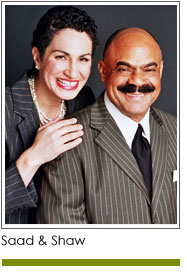 “Nobody taught us how to go out and fundraise.” – Former board member.
“Nobody taught us how to go out and fundraise.” – Former board member.
“After my experience at this organization, I am no longer interested in working in fundraising.” – former fundraising professional.
We heard each of these statements during the past week. These are not uncommon sentiments. However, they are not frequently voiced before people reach their breaking point. With this column we share three proactive steps your organization can take to support board members and fundraising professionals.
Provide coaching and opportunities to learn. This is important for both board members and fundraising professionals. When board members are “told” they are responsible for making a personal gift and raising a specific amount of money they can be put off by what they perceive as a mandate. “I didn’t sign up to fundraise” is the common complaint. Yet board members do have a fiduciary responsibility to the nonprofit organizations they govern. Take the time to learn the level of fundraising skill that each member possesses, and match these to your fundraising strategies. The same is true with staff. No one should be charged with “bringing in the money – no questions asked.” That is not a winning strategy.
The board member we heard from last week said he made the required gift and then resigned. He didn’t share his reasons for removing himself with the board president. The nonprofit lost a board member without gaining insight into how to prevent the situation from repeating itself.
Provide leadership. An executive director, president or CEO needs to lead the organization and hold people accountable. That means she needs to know fundraising as well as the roles and responsibilities of board members and staff. The executive needs to ensure board members don’t take charge of operations, directing staff on what to do. Likewise, she needs to hold staff accountable for reaching agreed upon goals. Note the phrase “agreed upon.” No one can mandate anything to anyone and expect smooth results. Fundraising professionals know their responsibilities and are often eager to expand these. At the same time they know that they are not miracle workers. They need the involvement of board members, the executive, and local stakeholders.
The fundraising professional we talked with last week was exasperated by how he was treated by the board. His work was not respected, the constraints he was operating under were not acknowledged, and he was publicly humiliated. That is not a program for retaining professionals.
Know your roles and responsibilities and fulfill them. Board members and fundraising professionals have distinct responsibilities. They need to work together, but each needs to understand his or her own role. Staff focuses on managing and implementing strategy and people; board members focus on policy, in addition to cultivating and soliciting major gifts. The fundraising plan should outline roles and responsibilities for staff and board. Neither should be insulted by professional development opportunities such as coaching, workshops, strategy sessions, and role playing.
Our guidance: work from a plan and stay in your lane: don’t take over other people’s responsibilities.
Copyright 2016 – Mel and Pearl Shaw
Mel and Pearl Shaw are authors of the new book FUNdraising Good Times Classics Vol. 1 now available on Amazon.com. For help growing your fundraising visit www.saadandshaw.com or call (901) 522-8727.














